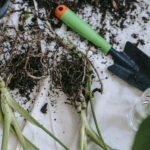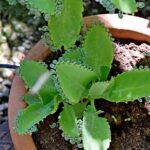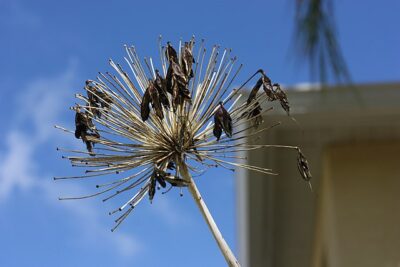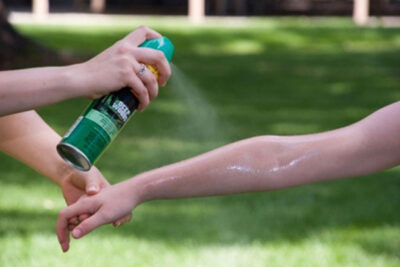
Troubleshooting: Is My Succulent Dying from the Bottom Up?

Having a succulent plant can be a great addition to any home or garden. These hardy plants are known for their ability to thrive in dry conditions and their unique and often beautiful shapes. However, like any living thing, succulents can sometimes encounter problems that may cause them to wither or die. One common issue that succulent owners may face is when their plant starts to die from the bottom up. This can be concerning and leave owners wondering what went wrong.
We will explore the possible reasons why a succulent may be dying from the bottom up and provide some troubleshooting tips to help revive and save your plant. We will discuss common causes such as overwatering, root rot, and pests, as well as provide guidance on how to identify and address these issues. By understanding the potential problems and implementing the appropriate solutions, you can help ensure the health and longevity of your succulent plant.
- Check the watering routine of your succulent
- Ensure that the succulent is getting enough sunlight
- Check for signs of pests or disease
- Adjust the temperature and humidity levels around the succulent
- Repot the succulent if it is root-bound
- Avoid over-fertilizing the succulent
- Prune any dead or dying leaves from the bottom of the succulent
- Provide proper drainage for the succulent's pot
- Consider adjusting the soil mix for better drainage
- Seek advice from a local gardening expert if the problem persists
- Frequently Asked Questions
Check the watering routine of your succulent
One of the first things to consider when troubleshooting a succulent that is dying from the bottom up is its watering routine. Succulents have specific watering needs, and getting this wrong can often lead to root rot and other issues.
First, assess how often you are watering your succulent. While it's important to ensure that the soil is moist, overwatering can be detrimental. A common mistake is watering on a set schedule without considering the moisture level of the soil.
To determine if your watering routine is the issue, check the soil moisture using your finger or a moisture meter. Stick your finger about an inch into the soil. If it feels dry, it's time to water. If it's still moist, hold off on watering until the soil dries out.
Additionally, consider the drainage of the pot your succulent is in. Succulents thrive in well-draining soil, meaning excess water should be able to flow out easily. If the pot doesn't have drainage holes, or if the plant is sitting in a saucer filled with water, the roots may become waterlogged and rot.
 The Common Reasons Succulents Die Easily: Understanding the Challenges
The Common Reasons Succulents Die Easily: Understanding the ChallengesRemember, succulents are adapted to survive in arid conditions, so they prefer to dry out between waterings. Adjusting your watering routine and ensuring proper drainage can often help revive a succulent that is dying from the bottom up.
Ensure that the succulent is getting enough sunlight
One possible reason why your succulent is dying from the bottom up is because it is not receiving enough sunlight. Succulents are known for their love of sunshine and they thrive in bright, indirect light. If your succulent is not getting enough sunlight, it may start to show signs of stress and eventually die.
To ensure that your succulent is getting enough sunlight, place it near a south-facing window or in a spot where it can receive at least 6 hours of sunlight per day. If you notice that your succulent is leaning towards the light source or its leaves are stretching out, it is a sign that it is not getting enough light. In this case, consider moving it to a brighter location or using artificial grow lights to supplement the natural light.
Remember, each succulent species has different light requirements, so it's important to research the specific needs of your succulent variety. Some succulents can tolerate more shade, while others require full sun exposure. Adjust the lighting conditions accordingly to ensure the overall health and vitality of your succulent.
Check for signs of pests or disease
When your succulent is showing signs of dying from the bottom up, it's important to investigate whether pests or disease are the culprits. Here are some common signs to look out for:
Pests
- Aphids: These small, pear-shaped insects can be found on the leaves or stems of your succulent. They suck the sap from the plant, causing leaves to wilt and turn yellow.
- Mealybugs: Mealybugs appear as white, cotton-like clusters on the leaves or stems. They also feed on the plant's sap, causing damage and discoloration.
- Spider mites: These tiny, spider-like creatures can be difficult to spot. They usually create fine webs on the leaves and cause yellowing or speckled discoloration.
Disease
- Rot: Overwatering or poor drainage can lead to root rot, which affects the bottom part of the succulent first. The plant may become mushy and discolored.
- Fungal infections: Fungal infections can cause black or brown spots on the leaves or stem. The affected areas may also appear mushy or slimy.
- Viral infections: Viral infections often cause mottled or distorted growth patterns in succulents. The leaves may display unusual patterns or colors.
If you suspect pests or disease, it's crucial to take action promptly. Remove any affected leaves or stems, and consider treating the plant with an appropriate insecticide or fungicide. Adjusting your watering routine and improving drainage can also help prevent future issues.
 Could Succulents Be Vulnerable to Fungal Infections?
Could Succulents Be Vulnerable to Fungal Infections?Remember to regularly inspect your succulents for signs of pests or disease as part of your ongoing care routine. Early detection and intervention are key to keeping your plants healthy and thriving.
Adjust the temperature and humidity levels around the succulent
Succulents thrive in specific temperature and humidity conditions, and an imbalance in these can lead to issues with the plant's health. If you notice your succulent dying from the bottom up, it could be due to unfavorable environmental conditions. Here are some troubleshooting steps to adjust the temperature and humidity levels:
1. Evaluate the temperature
Succulents generally prefer warm temperatures, ideally between 65°F and 85°F (18°C to 29°C). If the temperature drops below this range or exceeds it significantly, it can stress the plant and cause it to deteriorate from the bottom.
During colder months, protect your succulent from freezing temperatures by moving it indoors or providing suitable insulation. On the other hand, if the temperature is consistently too high, consider providing shade or placing the plant in a cooler location.
2. Check the humidity
Succulents are adapted to arid conditions and do best in low humidity environments. Excessive humidity can promote the growth of fungi and bacteria, leading to root rot and ultimately causing the succulent to die from the bottom up.
Ensure proper airflow around the succulent by avoiding overcrowding and placing it in a well-ventilated area. If the humidity is consistently high, consider using a dehumidifier or placing the plant in a drier location.
 Can Succulents Survive Fire? Fire Safety for Hardy Plants
Can Succulents Survive Fire? Fire Safety for Hardy Plants3. Provide adequate drainage
Proper drainage is crucial for succulent health, as excess water can accumulate in the soil and lead to root rot. If your succulent is dying from the bottom up, it may be a result of poor drainage.
Ensure that the pot or container has drainage holes to allow excess water to escape. Use a well-draining soil mix specifically formulated for succulents to prevent waterlogged conditions.
4. Monitor watering practices
Overwatering is a common mistake that can harm succulents. Watering schedules should be adjusted according to the environmental conditions and the specific needs of your succulent.
Allow the soil to dry out completely between watering sessions, and make sure not to water the succulent's leaves directly to prevent rot. Remember that succulents are designed to store water in their leaves, so they can withstand longer periods without being watered.
By adjusting the temperature and humidity levels around your succulent, ensuring proper drainage and monitoring watering practices, you can troubleshoot and prevent your succulent from dying from the bottom up.
Repot the succulent if it is root-bound
If you notice that your succulent is dying from the bottom up, one of the possible reasons could be that it has become root-bound. When a succulent outgrows its current pot, its roots become crowded and tangled, leading to poor drainage and nutrient absorption. This can ultimately result in root rot and the overall decline of the plant.
To address this issue, it is important to repot your succulent into a larger container with fresh, well-draining soil. Here's a step-by-step guide to help you through the process:
 Identifying Root Rot in Succulents: Yellow Leaves and Soft Stems
Identifying Root Rot in Succulents: Yellow Leaves and Soft Stems- Select a suitable pot: Choose a pot that is slightly larger than the current one, allowing room for the succulent to grow. Ensure that the new pot has drainage holes to prevent waterlogged soil.
- Prepare the new pot: Fill the bottom of the new pot with a layer of well-draining soil, such as a cactus or succulent mix. This will help promote proper drainage.
- Remove the succulent from its current pot: Gently tap the pot's sides to loosen the soil and roots. Carefully lift the plant out, ensuring not to damage the roots.
- Inspect the roots: Examine the roots for any signs of rot or damage. Trim off any diseased or mushy roots using a clean pair of scissors or pruning shears.
- Place the succulent in the new pot: Position the succulent in the center of the new pot, making sure it sits at the same depth as it was in the previous pot. Add more soil around the plant, gently pressing it down to secure the roots.
- Allow the plant to settle: Give the succulent some time to adjust to its new environment. Avoid watering for a few days to allow the roots to heal and prevent overhydration.
- Resume regular care: Once the succulent has settled, resume your regular watering and maintenance routine. Remember to provide adequate sunlight and avoid overwatering.
By repotting your succulent, you are giving it a fresh start with more space for growth and improved drainage. This can help prevent further decline and promote healthier root development, ultimately saving your succulent from dying from the bottom up.
Avoid over-fertilizing the succulent
One common reason why succulents may appear to be dying from the bottom up is over-fertilization. While it is important to provide your succulent with nutrients, too much fertilizer can actually harm the plant.
Succulents, by nature, are adapted to survive in low-nutrient environments. They have thick, fleshy leaves that store water, allowing them to withstand long periods without rainfall. As a result, they have a lower requirement for fertilizer compared to other plants.
When succulents are over-fertilized, the excess nutrients can build up in the soil and cause salt accumulation. This salt buildup can lead to root damage and hinder the plant's ability to absorb water properly. As a result, the lower leaves may start to wither and die.
To avoid over-fertilizing your succulent, it is important to follow the recommended dosage and frequency specified on the fertilizer package. Generally, succulents only need to be fertilized once or twice a year during their active growing season. It is also crucial to choose a fertilizer specifically formulated for succulents or cacti, as these contain the ideal balance of nutrients for their unique needs.
Additionally, it is essential to water your succulent thoroughly after fertilizing to help flush out any excess salts from the soil. This will prevent salt buildup and ensure the plant's roots can continue to absorb water effectively.
 Causes of White Spots on Succulent Leaves: A Comprehensive Guide
Causes of White Spots on Succulent Leaves: A Comprehensive GuideOver-fertilization can be a common cause of succulents dying from the bottom up. By being mindful of the fertilization process and following the recommended guidelines, you can help your succulent thrive and prevent any potential damage.
Prune any dead or dying leaves from the bottom of the succulent
If you notice that your succulent is starting to look unhealthy from the bottom up, it's important to take action to prevent further damage. One of the first steps you can take is to carefully prune any dead or dying leaves from the bottom of the plant.
Dead or dying leaves can often be a sign of overwatering or poor drainage, which can lead to root rot. By removing these leaves, you can help improve the overall health of your succulent and prevent the spread of any potential diseases.
Here's how you can prune your succulent:
- Start by examining the succulent and identifying any leaves that are brown, mushy, or completely dried out. These are the leaves that need to be removed.
- Using a pair of clean and sharp scissors or pruning shears, carefully cut off the damaged leaves as close to the stem as possible. Make sure to avoid cutting into the healthy parts of the plant.
- Dispose of the pruned leaves properly to prevent any potential pests or diseases from spreading.
After pruning, give your succulent some time to recover and adjust to its new environment. It's important to monitor the watering habits and ensure that you are providing the right amount of water for your specific succulent species.
If you continue to notice signs of decline or if the problem persists, it may be necessary to reevaluate other factors such as lighting conditions, temperature, or soil quality. Remember, each succulent has different care requirements, so it's essential to consider these factors when troubleshooting the health of your plant.
 Why Your Succulent Died Overnight and How to Prevent It
Why Your Succulent Died Overnight and How to Prevent ItBy regularly pruning dead or dying leaves and providing appropriate care, you can help ensure that your succulent thrives and remains healthy from the bottom up.
Provide proper drainage for the succulent's pot
One of the main reasons why succulents may be dying from the bottom up is due to improper drainage in their pots. Succulents are desert plants that are adapted to survive in arid conditions, and they have specialized water storage tissues. However, if their roots are sitting in water for too long, they can easily rot, leading to the death of the plant.
To ensure proper drainage for your succulent's pot, consider the following:
Use a well-draining soil mix
Avoid using regular potting soil, as it tends to retain too much moisture. Instead, opt for a well-draining soil mix specifically formulated for succulents or cacti. This type of soil typically contains a combination of materials such as sand, perlite, and pumice, which allow excess water to flow freely.
Add drainage holes to the pot
If your succulent's pot doesn't have drainage holes, it's important to create some. Without proper drainage, water will accumulate at the bottom, potentially causing root rot. Use a drill or a sharp object to create several small holes at the bottom of the pot to allow excess water to escape.
Avoid overwatering
Overwatering is a common mistake when it comes to succulent care. These plants have adapted to survive in dry conditions and don't require frequent watering. Before watering, always check if the soil is dry at least an inch deep. If it's still moist, hold off on watering until the soil has completely dried out.
 Are Mother of Thousands Succulents Toxic to Pets?
Are Mother of Thousands Succulents Toxic to Pets?Use a pot with good airflow
Choosing a pot with good airflow can also help prevent the bottom-up dying of succulents. Opt for pots made of porous materials like terracotta, which allow air to circulate around the roots. This helps prevent excess moisture buildup and promotes healthy root development.
By providing proper drainage for your succulent's pot, you can significantly reduce the risk of bottom-up dying. Remember to use a well-draining soil mix, add drainage holes if necessary, avoid overwatering, and choose a pot with good airflow. These simple steps will help ensure the overall health and longevity of your succulent.
Consider adjusting the soil mix for better drainage
If you notice that your succulent is dying from the bottom up, one possible cause could be poor drainage. Succulents thrive in well-draining soil that allows excess water to escape easily. If the soil retains too much moisture, it can lead to root rot and ultimately cause the plant to die.
To troubleshoot this issue, consider adjusting the soil mix. A good succulent soil mix should consist of a combination of well-draining materials such as sand, perlite, and pumice. These materials help create air pockets in the soil, allowing water to flow through and prevent waterlogged roots.
When repotting your succulent, make sure to choose a pot with drainage holes at the bottom. This will allow any excess water to escape, preventing it from pooling around the roots. Additionally, avoid using pots that are too large for your succulent, as this can lead to the soil retaining more moisture than necessary.
Remember to water your succulent sparingly, allowing the soil to dry out completely between waterings. Overwatering is a common mistake made by succulent owners and can contribute to root rot. It's better to underwater than to overwater your succulent, as they are highly adapted to survive in arid conditions.
 Identifying Root Rot: Spotting Unhealthy and Healthy Roots
Identifying Root Rot: Spotting Unhealthy and Healthy RootsQuick Tips:
- Use a well-draining soil mix consisting of materials like sand, perlite, and pumice.
- Choose a pot with drainage holes to allow excess water to escape.
- Avoid overwatering and let the soil dry out completely between waterings.
By taking these troubleshooting steps and adjusting the soil mix for better drainage, you can help revive your succulent and prevent further damage. Remember, succulents are resilient plants, and with proper care, they can thrive and bring beauty to your space.
Seek advice from a local gardening expert if the problem persists
If you have tried all the troubleshooting tips mentioned above and your succulent is still dying from the bottom up, it may be time to seek professional help from a local gardening expert. These experts have extensive knowledge and experience in dealing with various plant problems, including succulents.
A local gardening expert will be able to assess the situation more accurately and provide personalized advice based on your specific circumstances. They can examine your succulent closely, identify any underlying issues, and recommend the best course of action to save your plant.
When consulting a gardening expert, make sure to provide them with as much information as possible about your succulent's care routine, watering schedule, and any changes you may have noticed in its environment. This will help them better understand the problem and offer appropriate solutions.
Additionally, a gardening expert can guide you on the proper care and maintenance of your succulent moving forward. They can educate you about the ideal watering techniques, sunlight requirements, and fertilizer application for your specific succulent species.
 Managing White Fuzz on Succulents: Causes and Solutions
Managing White Fuzz on Succulents: Causes and SolutionsRemember, prevention is always better than cure. By seeking professional advice, you can not only save your dying succulent but also learn valuable insights that will help you maintain a healthy and thriving plant collection going forward.
Frequently Asked Questions
1. Why is my succulent dying from the bottom up?
This could be due to overwatering, lack of sunlight, or root rot caused by poor drainage.
2. How can I determine if my succulent is suffering from overwatering?
Yellowing leaves, mushy stems, and a foul odor are signs of overwatering in succulents.
3. What can I do to save my succulent from dying?
Ensure proper drainage, adjust watering frequency, provide adequate sunlight, and check for any signs of pests or diseases.
 Ant-Free Succulents: Effective Ways to Eliminate Ants
Ant-Free Succulents: Effective Ways to Eliminate Ants4. Is it possible to revive a dying succulent?
Yes, it is possible to revive a dying succulent by addressing the underlying issues, trimming any dead or rotting parts, and providing proper care going forward.
If you want to read more articles similar to Troubleshooting: Is My Succulent Dying from the Bottom Up?, you can visit the Pests and Diseases category.






You Must Read